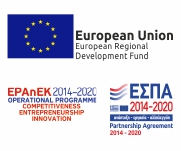The banking industry is undergoing a major digital transformation and as a result, core banking systems need to keep up with new technological advancements. This requires a strategic approach to technology selection, implementation, and management, as well as a culture of innovation and continuous improvement.
Moving forward with the updating of the legacy system and the adaptation to different operations model, no matter how efficient it might be, can prove to be a complex and challenging task. The existing Core Banking systems are not optimised to support and take advantage of new technologies and approaches, however, there are huge benefits that pay off in the short term.
It’s clear that to stay ahead of competition, banks need to embrace automation and adopt next-generation core banking platforms that are equipped with the latest features and technologies. In this context, discover below the ways in which Core Banking operations can be automated and streamlined to the full extent.
Where should banks focus to automate and streamline their Core Banking systems?
Adopting Robotic Process Automation (RPA)
By incorporating Robotic Process Automation (RPA) into core banking systems, routine tasks such as data entry can be automated, leading to improved efficiency and reduced errors. RPA contributes to the increase of speed of banking transactions and reduction of the workload for bank officers, freeing up time to focus on more complex and valuable tasks.
Embracing AI
AI can be incorporated in core banking systems to support backoffice functions in terms of risk assessment, detection, and prevention of payments fraud, improving processes for anti-money laundering (AML), optimizing the route for cross border payment transactions and providing early warnings for NPL prediction.
Many banks are planning to deploy AI-enabled core banking software over the next years, while many banking institutions have implemented AI in risk management or revenue generation.
Digitalising Back-Office Operations
Digitalising back-office operations is a rather daunting task, with the majority of banks preferring to utilise additional banking software around their outdated back-office technology. This has created disconnected silos of information and repetitive processes.
Through digitalization of back-office operations, however, core banking platforms achieve automation of processes and reduce the need for manual tasks. This can lead to faster processing times, increased accuracy, limited human errors and reduced operational costs.
Moreover, digitalisation in banking can provide a more secure and transparent environment for handling sensitive customer data and transactions, while real-time reporting helps to improve decision-making and support regulatory compliance.
Cloud Banking
Core Banking migration to the cloud is by now a reality, as a secure, mature and proven infrastructure alternative to traditional on-premise installations. However, the decision about core banking migration to the cloud is usually postponed due to its complexity, no matter the great advantages it offers in the long run.
The recent reality formed by the pandemic, with Banks forced to operate with closed branches, showed how easy it was for Banks already migrated to the cloud to instantly resume operations safely and securely, with personnel working remotely.
Additionally, migration to the cloud offers straightforward, on-demand scalability capabilities, significant investment and operational cost reduction as well as enhanced security features. Banks benefit from important advantages in the long run, that surely compensate for the initial impact on operations during the migration phase.
Implementing Straight-Through Processing (STP)
Legacy banking systems require a lot of manual data entry and intervention by the Bank officers. Apart from resource-consuming, this leads to ineffective exploitation of human resources and, undoubtedly, in error-prone operations, due to the human error factor.
Modern banking systems, due to clever usage of workflows, rule engines and ML, have automated such processes, proving that based on rules and data, the system itself may enhance data and take decisions traditionally requiring human intervention. A fine example of this, and as part of the latest ISO 20022, automated processing of payments is further enhanced with data-rich information and the ability to be easily shared across banks.
By implementing STP and automating processes, manual intervention is reduced, resulting in faster processing times and reduced errors, smarter utilisation of human resources and, thus, better efficiency end-to-end.
Selecting the right Core Banking software to automate and streamline your operations
Automating and streamlining core banking operations can greatly benefit banks in terms of efficiency, accuracy, access to real-time data and analytics, customer experience, and cost reduction. Finuevo Core, that can be offered as SaaS, enables traditional banks, digital and neobanks, as well as microfinance institutions to achieve their business goals by automating tasks across all operational aspects.
References
- Modernising legacy systems in banking – How banks can succeed at core and app modernisation , Deloitte
- Few years in, what is next for automation at banks?, Accenture
- The impact of artificial intelligence in the banking sector & how AI is being used in 2022, Business Insider
- Banks Cannot Hold Back Any Further on Digitising the Back Office, Capgemini
- How to build a digital bank using a cloud core banking solution – Introduction to a cloud core banking, Deloitte
- Nine considerations for ISO 20022 migration, EY











